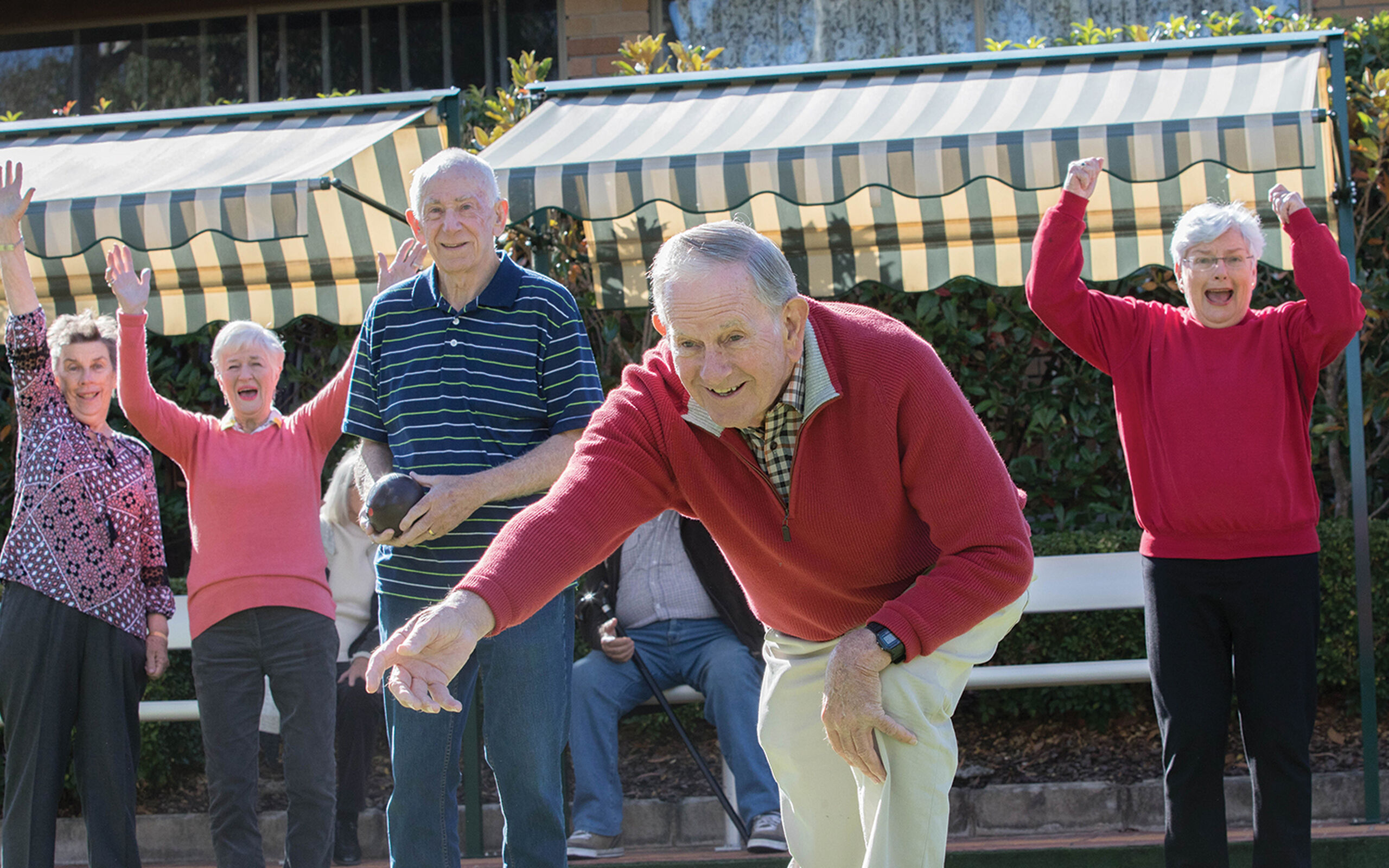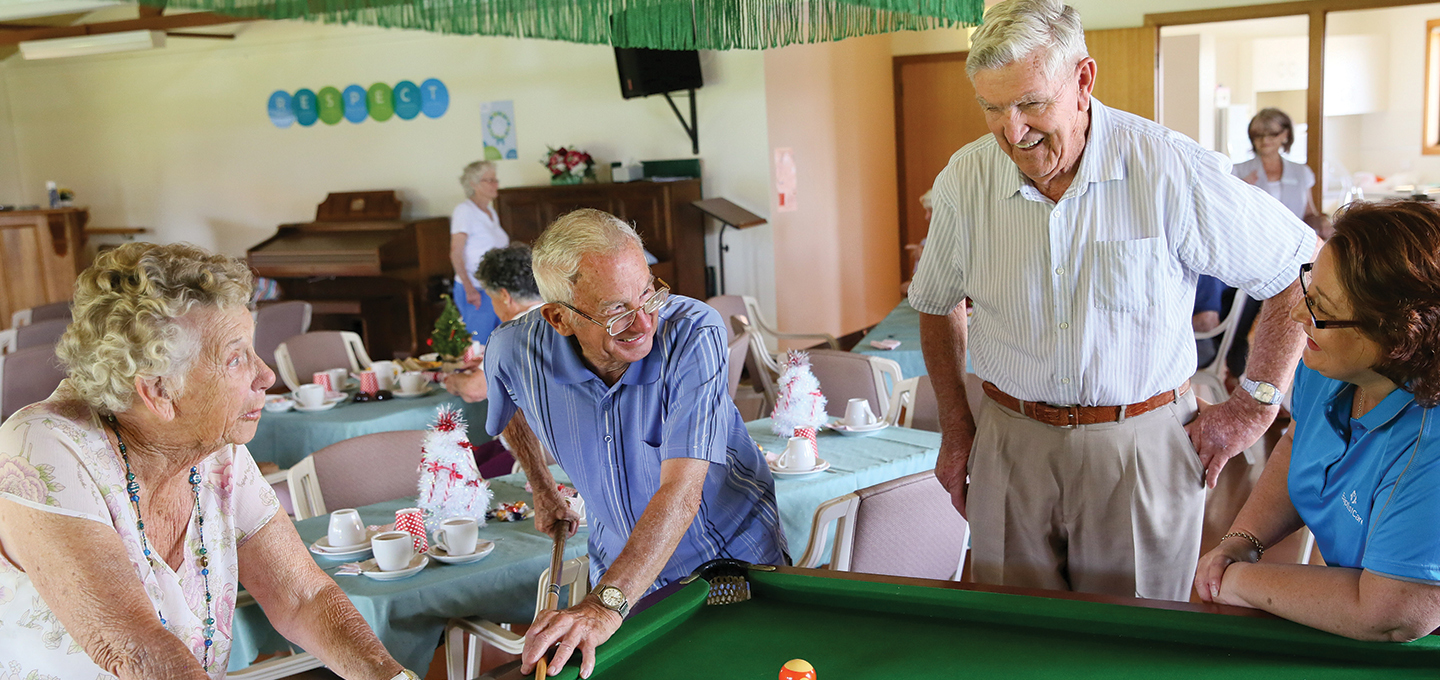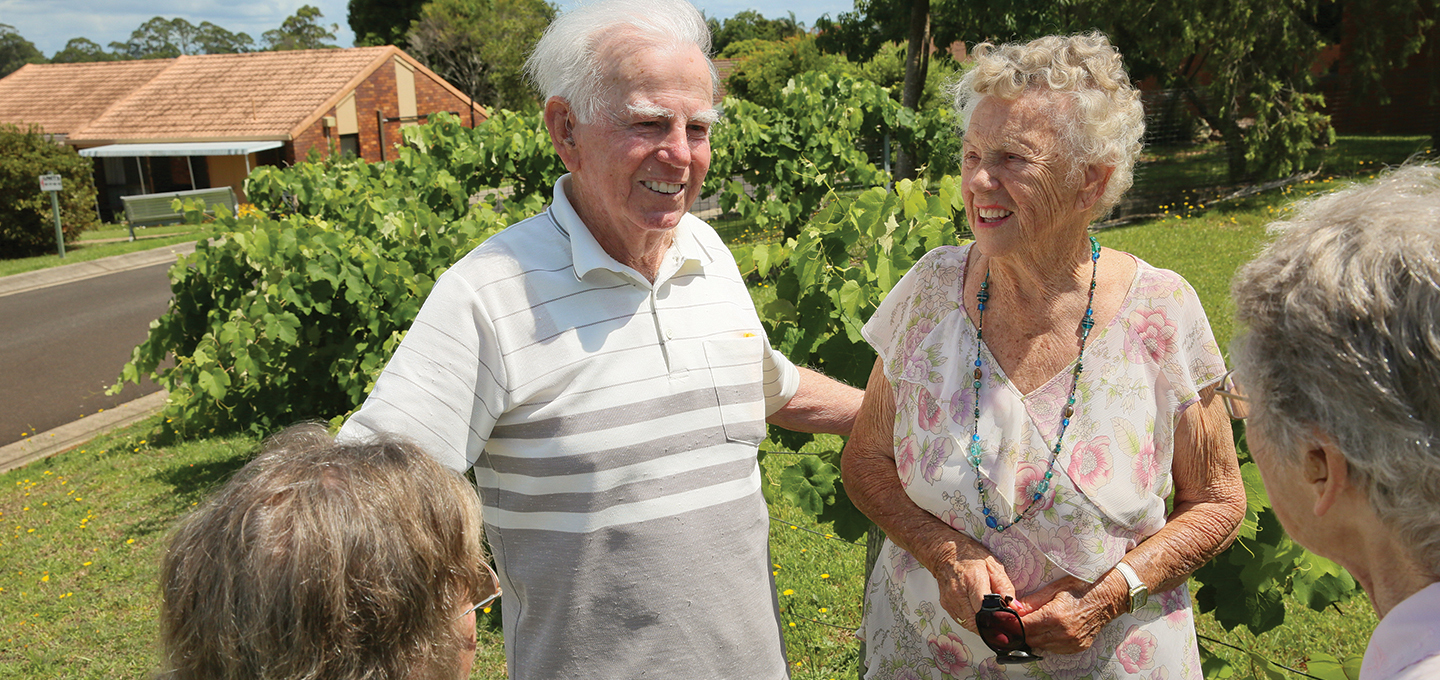Five things you need to know before moving into a retirement village
It’s a big decision to downsize into a retirement village, and you might be wondering what the lifestyle will be like, how much it costs, or what the differences are compared to a private residential sale. Here’s five golden nuggets you’ll be glad you knew before taking the plunge.
Scroll to Explore

01 January 2025
Stories
| Retirement Living
Five things you need to know before moving into a retirement village
It’s a big decision to downsize into a retirement village, and you might be wondering what the lifestyle will be like, how much it costs, or what the differences are compared to a private residential sale. Here’s five golden nuggets you’ll be glad you knew before taking the plunge.
Retirement living is an increasingly popular option for retirees, offering a strong sense of community, the peace of mind that comes with living in a safe and secure environment, and the ability to free up cash and enjoy doing things you’ve always wanted to do.
We’ve served retirees in Australia for more than 75 years, supporting thousands of people to achieve their dream retirement plans amongst beautiful communities in NSW and the ACT. Here we’ve addressed five popular topics that prospective residents often ask us about as they prepare for retirement living.
1. Retirement village pricing can be tailored to suit your personal circumstances
There is often confusion about how the pricing works when you buy into a retirement community, so we’ve laid it all out in this easy 3-step financial guide.
The key thing to note is that unlike in a private sale where you pay the market value of the property upfront, the lump sum you pay when buying into a retirement village (known as the entry payment) can be potentially reduced and tailored to suit your personal financial circumstances.
When you leave the retirement village, this entry payment is returned to you, minus a departure fee, also known as a Deferred Management Fee (DMF).
If you choose to pay a lower entry fee, then your DMF might be higher, but the idea is to make retirement living accessible and affordable for as many people as possible.
For most retirees, the DMF is around 30 percent of what was initially paid if they lived in the village for an agreed minimum term (usually five or six years). It covers the ongoing improvement and sometimes the expansion of village facilities to ensure residents can enjoy them long into the future.

2. There's a cooling-off period after the move
Many prospective village residents believe that once they’ve moved into a retirement community, they will have to pay handsomely to vacate should they change their minds.
In actual fact, most retirement villages offer a cooling off period after the move, so that new residents can familiarise themselves with community living and decide if it’s for them. At BaptistCare, our residents can enjoy a 90-day money-back guarantee whilst they settle in.
If new residents decide, however, that they would like to leave the retirement village within the 90-day cooling-off period, BaptistCare villages will provide a full refund, including any recurrent charges paid. Residents will only be charged market rent for the time that they stayed in the property.
3. Village rules help to maintain a peaceful environment for all (plus you get a say in what they are)
Retirement communities usually have a set of village rules which apply to both residents and management, upholding the peaceful, comfortable, and relaxed setting that is so attractive to retirees.
Village rules differ depending on the community, but it’s important to be aware of what they are before you move in, and make sure that they fit your lifestyle and expectations.
Village rules might be associated with:
- Noise restrictions during certain hours
- Garbage disposal
- Designated parking areas
- Keeping a pet
The rules will always be prepared in consultation with the resident community and are never altered or amended without residents’ consent; however, they may develop over time.

4. You have certain rights and obligations as a village resident
If you’re seriously considering moving into a retirement community, learning about your rights as a village resident is a key aspect of your preparations. Retirement villages in Australia must adhere to their State’s trading legislation, providing residents with certain rights and obligations.
You can read about your rights as a village resident via NSW Fair Trading or ACT Fair Trading.
Some of these might include the right to:
- Exercise self-reliance and autonomy in your personal, domestic and financial affairs
- Live in a village that is safe and secure
- Have requests for repairs and maintenance responded to within a reasonable time
- Have input into financial decision making
Residents are also entitled to attend annual management meetings, request copies of village accounts, and access any information held about them by the operator.
5. The key differences to general residential living
Many prospective residents ask how retirement communities differ from general residential living, and why they are often chosen over a private house sale.
There are several compelling reasons:
More affordable
Most of the time, buying into a retirement community is more affordable than a private sale within the local housing market.
The 2021 Retirement Living Census found that retirement village homes cost significantly less than the median house price in the same postcode. Prospective residents might expect their retirement village home to be valued at around 80 percent or less of a similar property in the local housing market, dependent on their choice of operator.
Feeling part of a community
Many of our village residents feel a great sense of belonging when they move into a village environment, surrounded by people at a similar stage of life who often share a similar mindset.
With so many group activities and events happening across the village, there are multiple opportunities to socialise, and it’s usually a matter of time before fast friendships are made.
Resort-style facilities
Village residents often tell us that retirement living feels like a permanent vacation, with community developments having a ‘holiday resort’ feel. Retirees can enjoy facilities like swimming pools and gyms, beautifully manicured gardens, bowling greens, walking tracks and even onsite vineyards.
Many retirement communities even have on-site services like hairdressers, banking facilities, and libraries, reducing the need for frequent travel should residents prefer to stay closer to home.

Freedom from ongoing maintenance
One of the many benefits of downsizing into a retirement community is relinquishing the responsibility of home and garden maintenance, something that can really take a physical toll - particularly later in life.
Knowing that your provider will take care of ongoing maintenance for you, even if you decide to go away for an extended period, can be a real game changer. Many of our residents who love to travel say they feel totally relaxed in the knowledge that they won’t have to come back to a long list of jobs to do in their home and garden.
Planning for your future needs
While most residents join our retirement villages without the need for ongoing care, many are also prudently planning for older age and have bought into retirement communities with this in mind.
For example, many of our retirement villages at BaptistCare incorporate residential aged care facilities within the development so that residents requiring additional care can remain in the community.
We also offer in home care services to support residents in their homes, along with our popular social clubs, which offer an array of stimulating and engaging activities for seniors.
Learn more in our article on residential aged care and retirement living.
How do I find a BaptistCare retirement village near me?
You can explore the benefits of retirement community living near you. Simply use BaptistCare’s handy online tool to find a location in New South Wales or Canberra.
BaptistCare has been trusted by thousands of Australians across the retirement living, aged care and community service sectors since 1944. While we are not-for-profit, there are a few things that we certainly are for: outstanding quality and a quest to truly make a difference, not just in our retirement living communities, but in all communities.
Click the link below to learn more about BaptistCare's
Retirement Living | Financials Explained | Adaptive Living | Find a village
Make an enquiry
If you would like to know more, please complete the form and one of our retirement living specialists will be in touch.